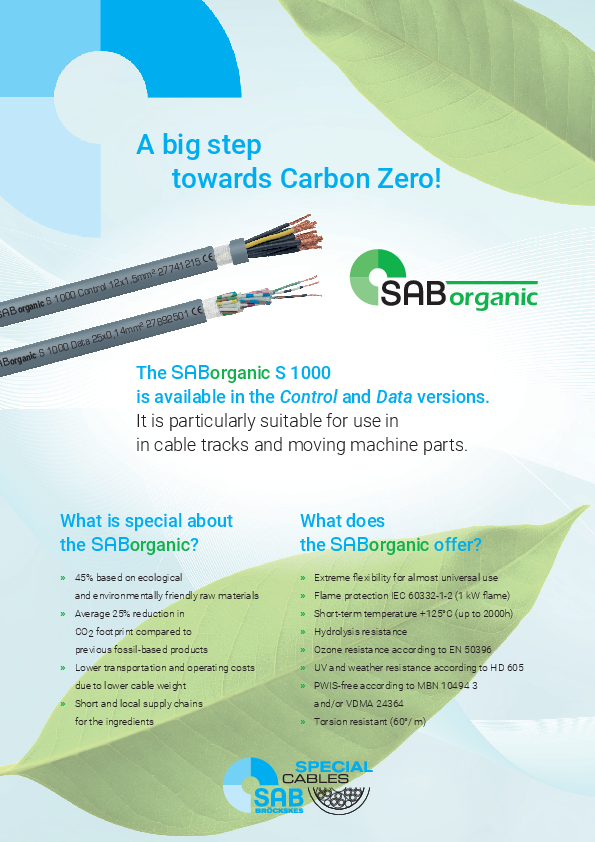SAB Bröckskes is responding to the trend and increasing demand for products made from renewable raw materials. Now, the manufacturer has introduced a new, CO2-reduced series of data and control cables.
The SABorganic S 1000 cable, which can be twisted by 60° per meter, has an outer sheath made of polyurethane based on organic materials. The new material is sourced from short, local supply chains and consists of 45% renewable raw materials. This reduces the carbon footprint by an average of 25% versus comparable fossil-dependent products.
The new, more climate-friendly cable measures up to conventional SAB drag chain cables such as the S 200 in all relevant product properties. The SABorganic S 1000, which is provided as Control and Data versions, is available by default in various unshielded and shielded types with 3 to 20 wires in cross-sections between 0.14 mm² and 10.0 mm². Other additional sizes can be realized on request.
The new sheath material is halogen-free and flame-retardant according to IEC 60332-1-2, thus minimizing potential fire hazards. In addition, SABorganic S 1000 is resistant to mineral-oil-based lubricants and many chemicals. The new series is ozone-resistant in accordance with EN 50396, UV and weather-resistant in accordance with HD 605 and free of substances that interfere with paint wetting. The CO2-reduced sheath material concept is transferable to other products. Determining factors are the customer requirements and the individual application area for the cable. Energy savings due to comparatively low processing temperatures and low cable weights, which reduce transport costs, also contribute to the improved life cycle assessment of the new series.
Not included in the CO2 reduction of the SABorganic S 1000 series is the steadily growing share of self-generated electricity from renewable energies. The expansion of renewable energies has been driven forward in recent years. Around a quarter of SAB's electricity requirements are now covered by its own PV systems.


